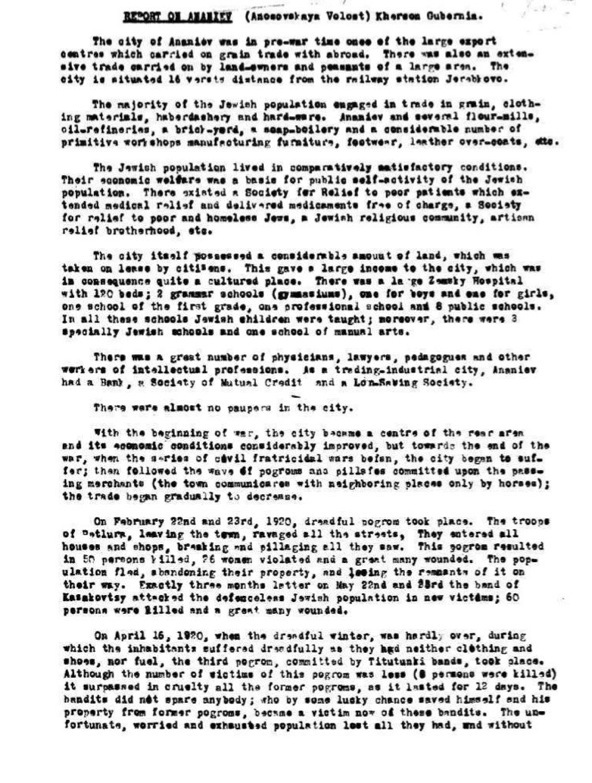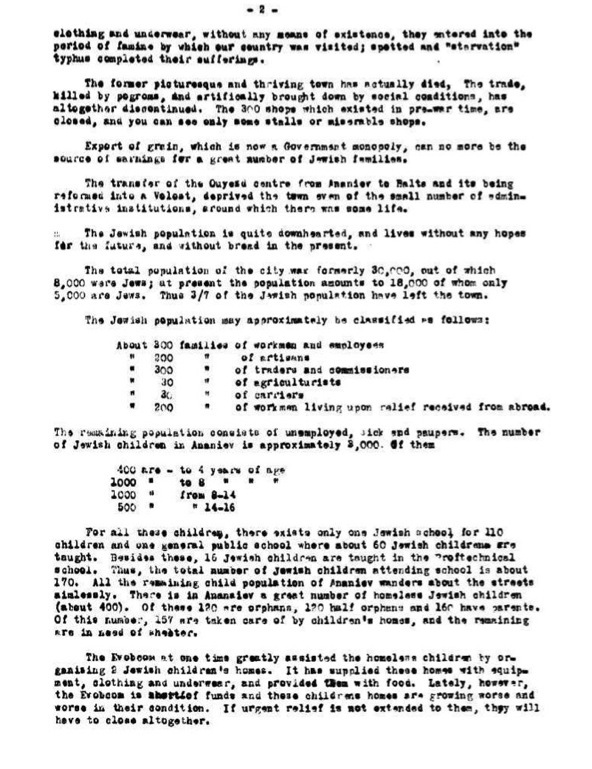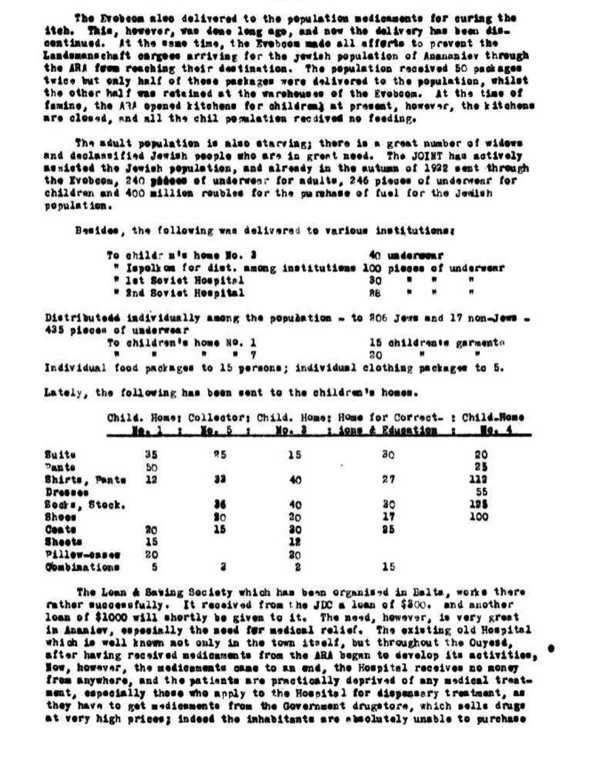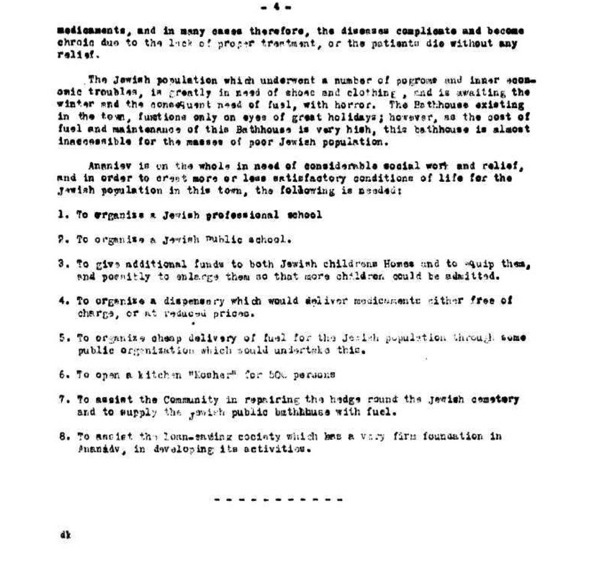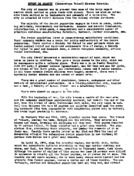Partial Translation by Alex Dunai of Document Regarding Ananiev
(found during research in the CentralArchives of the Jewish People in Jerusalem in 2004. The Archives has since moved to the Giv'at Ram Campus of the Hebrew University)
The handwriting is calligraphic Russian, typical of the early 20th century and prior.
The year may be 1911. I need to re-check my copy.
-
1. Regarding the relations between peasants and Jews, it’s hard to tell anything for sure. But it’s necessary to indicate that all those peasants who, during the agrarian movement participated in that movement, were friendly to Jews and expressed their willingness to protect Jews who were living on the lands of landlords. Some people state that most recently, peasants have changed their attitude to Jews to the better.
-
2. I need to add that Ananiev’s Jewish community is not active: it’s rather indifferent! and is not intellectual. It’s not brave at all and suffers from a lack of intellectual, educated individuals.
-
3. So far, one cannot see any pre-electional promotion. Society, in general, except a little part of the Jewish population, are very neutral to everything.
-
4. I have to inform you that 10 persons joined the Union. A few more are going to join....We started relations with the Jewish voters who live in the county. Here, is started a branch of the Constitutional Democratic Party.* The leaders of the party wish to involve Jews, also.
-
5. I didn’t get any reply from you to my two letters sent during the last month.I enclose 6 rubles collected by the following people:
-
Lihterman, M.M. 50 kopeks
-
Lovitski, M.M. ’’ [ditto symbols for each name continue down the list]
-
Dolgin, L.I. “
-
Lukatchen, Sh.
-
Linetski, E.
-
Bernstein, A.L.
-
Dubovoy, D.
-
Babad, D.S.
-
Katsenelenson, A.
-
Kopp
-
Kolbasher, G.L.
-
Grusheusk, I. L.
Note: We did not pursue further translating as there were no more names or details. I will attempt to scan and post the page as it appears in Cyrillic from my photocopy, at a later date.

